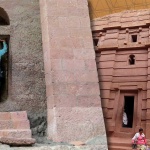From The Queen Of Sheba’s Palace To The Ark Of The Covenant
Even a landslide can’t hold back intrepid GP Dr Anne Small from exploring the Ethiopian countryside on her latest trip away to Africa. In this blog, she comes across everything from a local funeral to solid gold royal crowns and famed religious artifacts.
 We left the hotel at 8.30am and it did not take long for another adventure to begin at 9am in the form of a landslide which was completely blocking the winding mountain road. We didn’t have to wait long for the road grader to arrive, but some truck drivers had been waiting since 10pm the previous night! It took the grader over an hour to clear and then we continued along the Tekeze River gorge road with its spectacular views. We arrived too late in Axum to visit any monuments, but we made up for this the next day.
We left the hotel at 8.30am and it did not take long for another adventure to begin at 9am in the form of a landslide which was completely blocking the winding mountain road. We didn’t have to wait long for the road grader to arrive, but some truck drivers had been waiting since 10pm the previous night! It took the grader over an hour to clear and then we continued along the Tekeze River gorge road with its spectacular views. We arrived too late in Axum to visit any monuments, but we made up for this the next day.
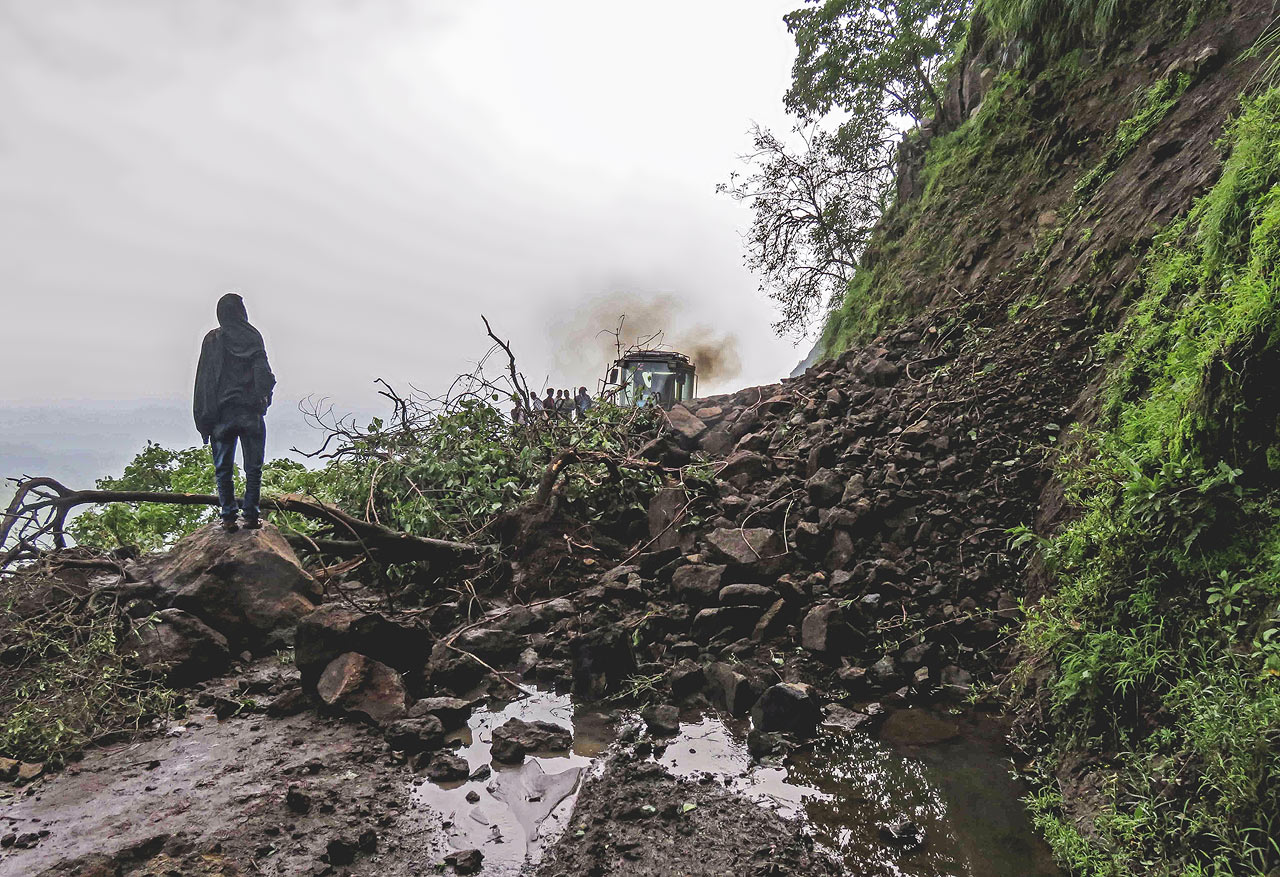

On our new day in Axum we visited the stele (or monoliths) field. Stele are carved from a single block of granite and the two left standing are carved to resemble a multi-storey house with windows, door and structural beams. The largest stele is 33 metres long, weighs 520 tons and has 13 storeys, but it has unfortunately fallen over.
A Christian funeral occurred while we were there in the church across the road. There were over 1,000 mourners, all dressed in white! The men walked along the street first to the church, followed by the women.
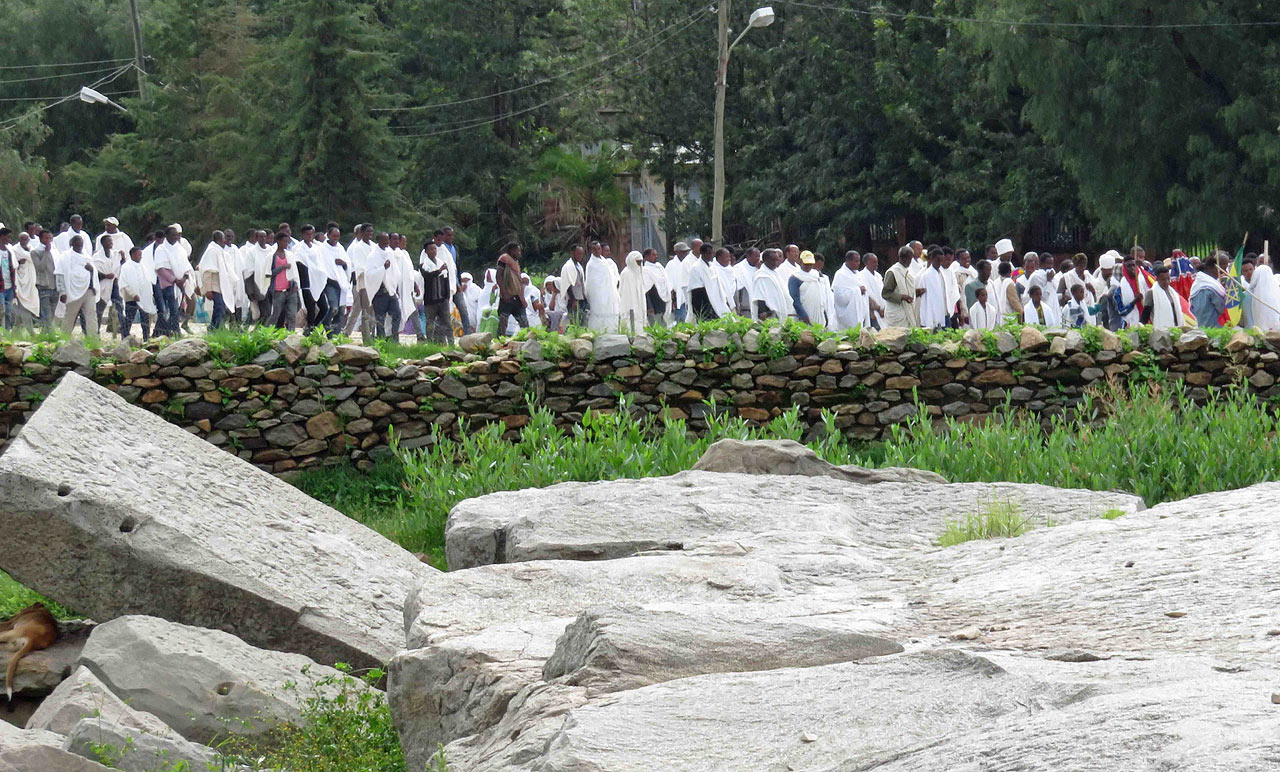
At the stele field’s onsite coffee place, we spoke with a fascinating young British/American archaeologist who has worked in Ethiopia for some time. He said that at one site they were working at they found evidence of not one, but two palaces underneath the one they were working on. They have discovered so many artifacts that they have run out of room to store them.
Another fascinating thing he said was that in the dry season when there is no grass, he can walk around the various fields (in which people plant their crops) and know where palaces and churches are buried by the configuration of the land.
We next went to the ruins of the Queen of Sheba’s palace. It was a little way out of town, and you could easily drive past it. It has 50 rooms and has been partially rebuilt to show the layout of the rooms, but it was a bit of an anti-climax after all the stories of how important she was in Ethiopian history.
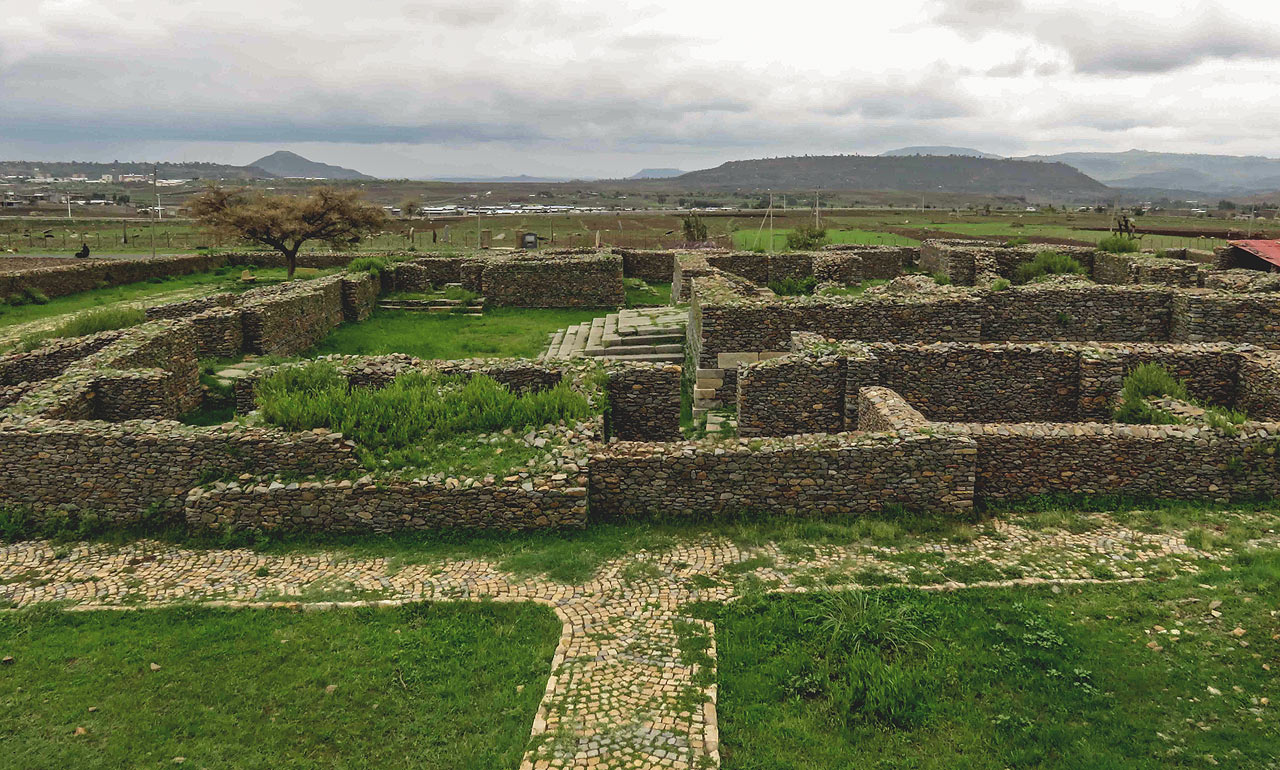
After lunch was the highlight – we visited the St Mary of Zion Church complex. The main church is being renovated, but we saw the green-domed church, where, it is said, rests the Ark of the Covenant (containing the stone tablets on which the 10 commandments were written). It is looked after by one monk who can never leave the building, and no-one can see it.

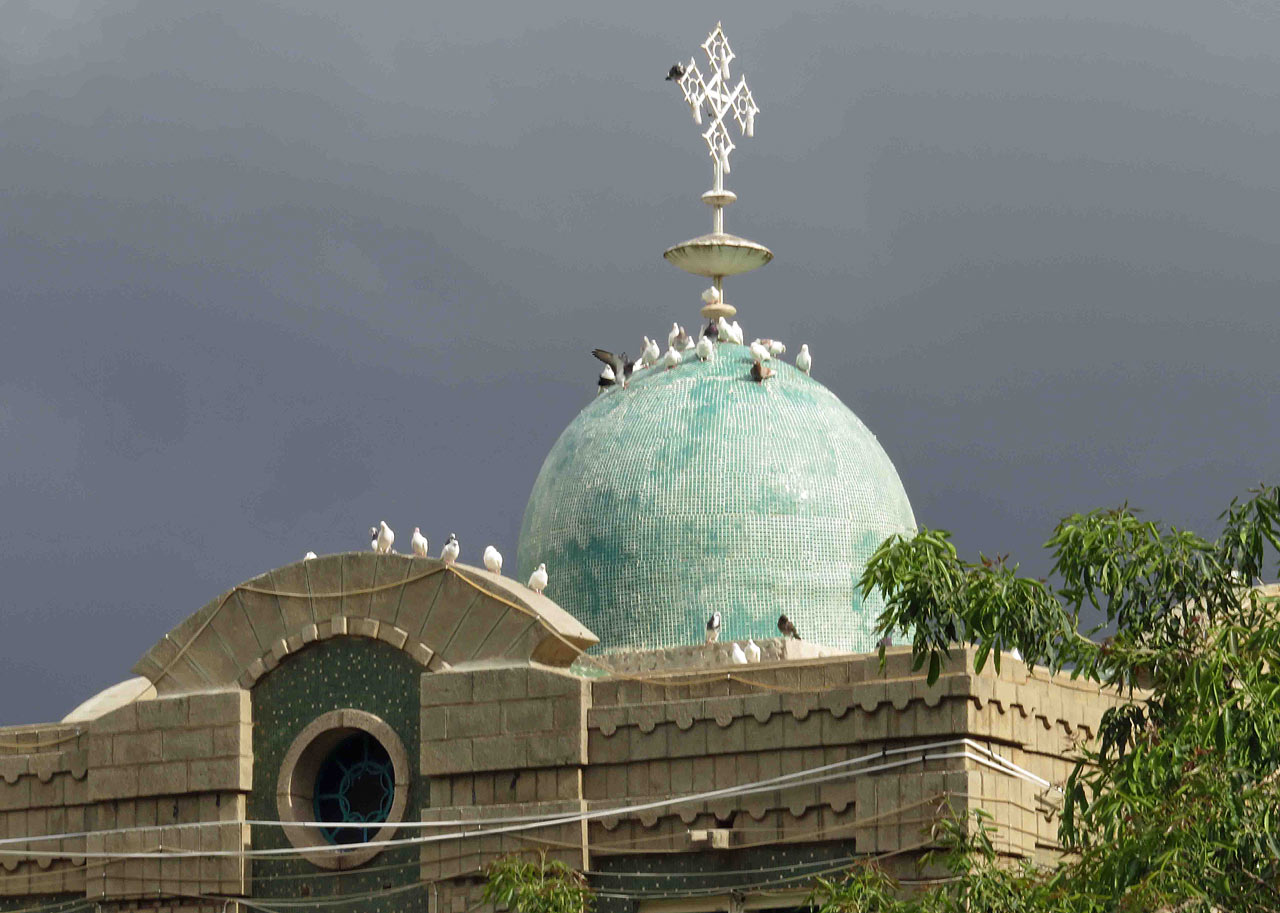
But the absolute highlights were found in a tin shed next to the Church which is a temporary site until the new 4-storey museum is finished. In this tin shed were most of the ceremonial crowns worn by the Axum emperors – most are solid gold with one weighing 2.7 kg and some are studded with diamonds, rubies and sapphires. Emperor Haile Selassie’s crown is there, which has about 100 diamonds in it. When I asked the guide why there were not any security guards, he replied with a knowing look that the relics are protected by the Ark of the Covenant next door.
There were also ceremonial gowns 1,000 years old and beautifully embroidered pieces of cloth dating back 2,000 years which are said to have covered the Ark of the Covenant.
What an amazing experience! It was, for me, a mind-blowing exhibition of priceless ancient relics all in a tin shed. We were not allowed to take photos – probably the only security measure there was!
Our next day began in Axum again where our guide Kibrrom took us to the local weekly Basket Market with beautifully coloured and decorative baskets for sale, before we flew off to Lalibela for our next adventures.








